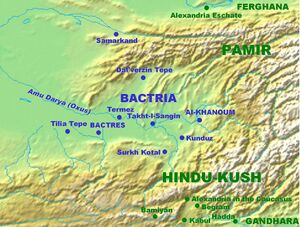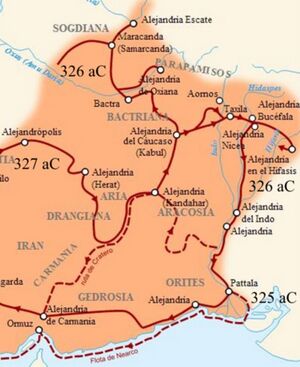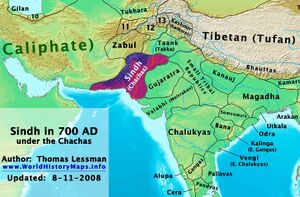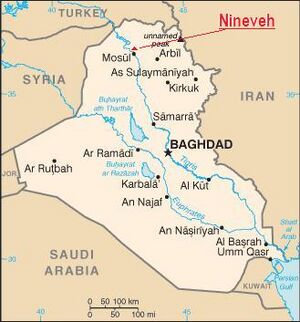Tukharistan



Tukharistan (तुखारिस्तान) or Tokharistan or Bactria (from Old Persian Bāxtriš; Bactrian: Baktra; Persian/Pashto: باختر Bākhtar; Chinese: 大夏 Dàxià; Sanskrit: बाह्लीक Bahilka) is the ancient name of a historical region located south of the Amu Darya and west of Gandhara.
Origin of name
Tukharistan means the land of Tukharas. Tukhara (तुखार) was one of The Mahabharata Tribes frequently mentioned in Mahabharata.
तुखारिस्तान
तुखारिस्तान - दलीप सिंह अहलावत लिखते हैं - यह देश तुखार या तुषार वंशज जाट के नाम पर प्रसिद्ध था। इसकी स्थिति भारतवर्ष और ईरान के बीच में थी। सुग्ध, कम्बोज और बल्ख प्रदेश इसके अन्तर्गत थे। इस तुखारिस्तान देश की राजधानी तेरमिज थी। यह तुषारों का देश गिलगित तक था। इनके नाम पर तुषारगिरि पर्वत था जो मुस्लिमकाल में हिन्दुकुश के नाम से प्रसिद्ध हुआ। इन लोगों ने अपनी तुखारी भाषा भी प्रचलित की थी। (देखो तृतीय अध्याय, ऋषिक-तुषार-मलिक प्रकरण)।[1]
Jat Gotras from Tukhara
- Takhar (ताखर) - Hukum Singh Panwar considers them originated from Tukhara (तुखार) mentioned in Mahabharata.[2]
- Tushar (तुषार) Tukhar (तुखार) Tusiar (तुसियर) Tusir (तुसीर) Tushir (तुशीर) gotra of Jats originated from Tushara (तुषार) janapada mentioned in Mahabharata. This place is now in Gilgit. There was Tusharagiri mountain also. [3]
- Tokshi (तोक्षी) Toxi (तोक्षी) Tochhi (तोछी) Tokhi (तोक्षी) is gotra of Jats. The name Tukhara itself survives in the name of the Tokhi caste found in the North- West.[4]
History
Ancient Bactria was in present-day northern Afghanistan, between the Hindu Kush mountain range and the Amu Darya. Once Zoroastrian, this region subsequently hosted Buddhism before becoming Muslim after the arrival of the Rashiduns and Umayyads in the 7th century. Bactria was also sometimes referred to by the Greeks as Bactriana.
The Bactria–Margiana Archaeological Complex (BMAC, also known as the "Oxus civilization") is the modern archaeological designation for a Bronze Age culture of Central Asia, dated to ca. 2200–1700 BC, located in present day Turkmenistan, northern Afghanistan, southern Uzbekistan and western Tajikistan, centered on the upper Amu Darya (Oxus), in area covering ancient Bactria. Its sites were discovered and named by the Soviet archaeologist Viktor Sarianidi (1976). Bactria was the Greek name for Old Persian Bāxtriš (from native *Bāxçiš)[5] (named for its capital Bactra, modern Balkh), in what is now northern Afghanistan, and Margiana was the Greek name for the Persian satrapy of Margu, the capital of which was Merv, in today's Turkmenistan.
The early Greek historian Ctesias c. 400 BC (followed by Diodorus Siculus) alleged that the legendary Assyrian king Ninus had defeated a Bactrian king named Oxyartes in ca. 2140 BC, or some 1000 years before the Trojan War. Ever since the discovery of cuneiform enabled actual Assyrian records to be deciphered in the 19th century, however, historians have ascribed little value to the Greek account.
Homeland of Indo-European tribes: According to some writers, Bactria was the homeland of Indo-European tribes who moved south-west into Iran and into North-Western India around 2500–2000 BC. Later, it became the north province of the Persian Empire in Central Asia.[6] It was in these regions, where the fertile soil of the mountainous country is surrounded by the Turanian desert, that the prophet Zoroaster (Zarathushtra) was said to have been born and gained his first adherents. Avestan, the language of the oldest portions of the Zoroastrian Avesta, was one of the old Iranian languages, and is the oldest attested member of the Eastern Iranian branch of the Iranian language family.
It is suggested by E. Herzfeld that, prior to its annexation to the Persian Empire by Cyrus the Great in 6th century B.C., Bactria belonged to the Median empire[7] and together with Margiana formed the twelfth satrapy of Persia.[8] After Darius III had been defeated by Alexander the Great, the satrap of Bactria, Bessus attempted to organize a national resistance but was captured by other warlords and delivered to Alexander. He was then tortured and killed.[9]
Alexander conquered Sogdiana and Iran. However, in the south, beyond the Oxus, he met strong resistance. After two years of war and a strong insurgency campaign, Alexander managed to establish little control over Bactria. After Alexander's death, the Macedonian empire was eventually divided up between generals in Alexander's army. Bactria became a part of the Seleucid Empire, named after its founder, Seleucus I.
Seleucid Empire: The Macedonians, especially Seleucus I and his son Antiochus I, established the Seleucid Empire and founded a great many Greek towns. The Greek language became dominant for some time there.
The paradox that Greek presence was more prominent in Bactria than in areas far closer to Greece can possibly be explained[original research?] by past deportations of Greeks to Bactria. For instance, during the reign of Darius I, the inhabitants of the Greek city of Barca, in Cyrenaica, were deported to Bactria for refusing to surrender assassins.[10] In addition, Xerxes also settled the "Branchidae" in Bactria; they were the descendants of Greek priests who had once lived near Didyma (western Asia Minor) and betrayed the temple to him.[11] Herodotus also records a Persian commander threatening to enslave daughters of the revolting Ionians and send them to Bactria.[12] However, these few examples are not indicative of massive deportations of Greeks to central Asia.
Indo-Greek Kingdom: The Bactrian king Euthydemus and his son Demetrius crossed the Hindu Kush mountains and began the conquest of the Indus valley. For a short time, they wielded great power: a great Greek empire seemed to have arisen far in the East. But this empire was torn by internal dissensions and continual usurpations. When Demetrius advanced far into India one of his generals, Eucratides, made himself king of Bactria, and soon in every province there arose new usurpers, who proclaimed themselves kings and fought against each other.
Most of them we know only by their coins, a great many of which are found in Afghanistan. By these wars, the dominant position of the Greeks was undermined even more quickly than would otherwise have been the case. After Demetrius and Eucratides, the kings abandoned the Attic standard of coinage and introduced a native standard, no doubt to gain support from outside the Greek minority.
In India, this went even further. The Indo-Greek king Menander I (known as Milinda in India), recognized as a great conqueror, converted to Buddhism. His successors managed to cling to power until the last known Indo-Greek ruler, a king named Strato II, who ruled in the Punjab region until around 55 BC.[13]Other sources, however, place the end of Strato II's reign as late as 10 AD.
Sakas, Yuezhis and Sassanids
The weakness of the Greco-Bactrian empire was shown by its sudden and complete overthrow, first by the Sakas, and then by the Yuezhi (who later became known as Kushans), who had conquered Bactria by the time of the visit of the Chinese envoy Zhang Qian (circa 127 BC), who had been sent by the Han emperor to investigate lands to the west of China.[14]
Kujula Kadphises, the Guishuang xihou (or prince) of the Da Yuezhi, united the region in the early 1st century and laid the foundations for the powerful, but short-lived, Kushan Empire (1st to 3rd century AD), which was then overcome by the Sasanians from Persia.
Ch.8 Description of Darius-III's Army at Arbela against Alexander

They come to the aid of Darius-III (the last king of the Achaemenid Empire of Persia) and were part of alliance in the battle of Gaugamela (331 BC) formed by Darius-III in war against Alexander the Great at Arbela, now known as Arbil, which is the capital of Kurdistan Region in northern Iraq.
Arrian[15] writes....Alexander therefore took the royal squadron of cavalry, and one squadron of the Companions, together with the Paeonian scouts, and marched with all speed; having ordered the rest of his army to follow at leisure. The Persian cavalry, seeing Alexander, advancing quickly, began to flee with all their might. Though he pressed close upon them in pursuit, most of them escaped; but a few, whose horses were fatigued by the flight, were slain, others were taken prisoners, horses and all. From these they ascertained that Darius with a large force was not far off. For the Indians who were conterminous with the Bactrians, as also the Bactrians themselves and the Sogdianians had come to the aid of Darius, all being under the command of Bessus, the viceroy of the land of Bactria. They were accompanied by the Sacians, a Scythian tribe belonging to the Scythians who dwell in Asia.[1] These were not subject to Bessus, but were in alliance with Darius. They were commanded by Mavaces, and were horse-bowmen. Barsaentes, the viceroy of Arachotia, led the Arachotians[2] and the men who were called mountaineer Indians. Satibarzanes, the viceroy of Areia, led the Areians,[3] as did Phrataphernes the Parthians, Hyrcanians, and Tapurians,[4] all of whom were horsemen. Atropates commanded the Medes, with whom were arrayed the Cadusians, Albanians, and Sacesinians.[5] The men who dwelt near the Red Sea[6] were marshalled by Ocondobates, Ariobarzanes, and Otanes. The Uxians and Susianians[7] acknowledged Oxathres son of Aboulites as their leader, and the Babylonians were commanded by Boupares. The Carians who had been deported into central Asia, and the Sitacenians[8] had been placed in the same ranks as the Babylonians. The Armenians were commanded by Orontes and Mithraustes, and the Cappadocians by Ariaoes. The Syrians from the vale between Lebanon and Anti-Lebanon (i.e. Coele-Syria) and the men of Syria which lies between the rivers[9] were led by Mazaeus. The whole army of Darius was said to contain 40,000 cavalry, 1,000,000 infantry, and 200 scythe-bearing chariots.[10] There were only a few elephants, about fifteen in number, belonging to the Indians who live this side of the Indus.[11] With these forces Darius had encamped at Gaugamela, near the river Bumodus, about 600 stades distant from the city of Arbela, in a district everywhere level;[12] for whatever ground thereabouts was unlevel and unfit for the evolutions of cavalry, had long before been levelled by the Persians, and made fit for the easy rolling of chariots and for the galloping of horses. For there were some who persuaded Darius that he had forsooth got the worst of it in the battle fought at Issus, from the narrowness of the battle-field; and this he was easily induced to believe.
1. Cf. Aelian (Varia Historia, xii. 38).
2. Arachosia comprised what is now the south-east part of Afghanistan and the north-east part of Beloochistan.
3. Aria comprised the west and north-west part of Afghanistan and the east part of Khorasan.
4. Parthia is the modern Khorasan. Hyrcania was the country south and south-east of the Caspian Sea. The Tapurians dwelt in the north of Media, on the borders of Parthia between the Caspian passes. Cf. Ammianus, xxiii. 6.
5. The Cadusians lived south-west of the Caspian, the Albanians on the west of the same sea, in the south-east part of Georgia, and the Sacesinians in the north-east of Armenia, on the river Kur.
6. "The Red Sea was the name originally given to the whole expanse of sea to the west of India as far as Africa. The name was subsequently given to the Arabian Gulf exclusively. In Hebrew it is called Yam-Suph (Sea of Sedge, or a seaweed resembling wool). The Egyptians called it the Sea of Weeds.
7. The Uxians occupied the north-west of Persis, and Susiana was the country to the north and west of Persis.
8. The Sitacenians lived in the south of Assyria. ἐτετάχατο. is the Ionic form for τεταγμἑνοι ἦσαν.
9. The Greeks called this country Mesopotamia because it lies between the rivers Euphrates and Tigris. In the Bible it is called Paddan-Aram (the plain of Aram, which is the Hebrew name of Syria). In Gen. xlviii. 7 it is called merely Paddan, the plain. In Hos. xii. 12, it is called the field of Aram, or, as our Bible has it, the country of Syria. Elsewhere in the Bible it is called Aram-naharaim, Aram of the two rivers, which the Greeks translated Mesopotamia. It is called "the Island," by Arabian geographers.
10. Curtius (iv. 35 and 45) states that Darius had 200,000 infantry, 45,000 cavalry, and 200 scythed chariots; Diodorus (xvii. 53) says, 800,000 infantry, 200,000 cavalry, and 200 scythed chariots; Justin (xi. 12) gives 400,000 foot and 100,000 horse; and Plutarch (Alex., 31) speaks of a million of men. For the chariots cf. Xenophon (Anab., i 8, 10); Livy, xxxvii. 41.
11. This is the first instance on record of the employment of elephants in battle.
12. This river is now called Ghasir, a tributary of the Great Zab. The village Gaugamela was in the district of Assyria called Aturia, about 69 miles from the city of Arbela, now called Erbil.
Contacts with China
Contacts with China: The name Daxia appears in Chinese from the 3rd century BC to designate a mythical kingdom to the West, possibly a consequence of the first contacts with the expansion of the Greco-Bactrian Kingdom, and then is used by the explorer Zhang Qian in 126 BC to designate Bactria.
The reports of Zhang Qian were put in writing in the Shiji ("Records of the Grand Historian") by Sima Qian in the 1st century BC. They describe an important urban civilization of about one million people, living in walled cities under small city kings or magistrates. Daxia was an affluent country with rich markets, trading in an incredible variety of objects, coming from as far as Southern China. By the time Zhang Qian visited Daxia, there was no longer a major king, and the Bactrian were suzerains to the nomadic Yuezhi, who were settled to the north of their territory beyond the Oxus (Amu Darya). Overall Zhang Qian depicted a rather sophisticated but demoralized people who were afraid of war.
Following these reports, the Chinese emperor Wu Di was informed of the level of sophistication of the urban civilizations of Ferghana, Bactria and Parthia, and became interested in developing commercial relationship with them:
- "The Son of Heaven on hearing all this reasoned thus: Ferghana (Dayuan) and the possessions of Bactria (Daxia) and Parthia (Anxi) are large countries, full of rare things, with a population living in fixed abodes and given to occupations somewhat identical with those of the Chinese people, but with weak armies, and placing great value on the rich produce of China" (Hanshu, Former Han History).
These contacts immediately led to the dispatch of multiple embassies from the Chinese, which helped to develop the Silk Road.
Tokharistan
Following the settlement of the Yuezhi (referred to by the Greeks as Tókharoi), the general area of Bactria came to be called Tokharistan. The territory of Tokharistan was identical with Kushan Bactria, including the areas of Surkhandarya, Southern Tajikistan and Northern Afghanistan.
The first literary mentions of Tokharistan appear at the end of the 4th century in Chinese Buddhist sources (the Vibhasa-sastra). However, the first mention of the Tókharoi appear much earlier, in the 1st century BC, when Strabo mentions that "the Tókharoi, together with the Assianis, Passianis and Sakaraulis, took part in the destruction of the Greco-Bactrian kingdom" in the second half of the 2nd century BC. Ptolemy also mentions a large Tokharian tribe in Bactria, describing the central role of the Tokharians among other tribes in Bactria. (Through an accident of naming, the term "Tocharian" now commonly refers to a branch of Indo-European languages spoken in the Tarim Basin between the 3rd and 9th centuries AD, and quite distinct from the Bactrian language spoken by the Tókharoi.)
From the 1st century AD to the 3rd century AD, Tokharistan was under the rule of the Kushans. They were followed by the Sassanids (Indo-Sassanids). Later, in the 5th century, it was controlled by the Xionites and the Hephthalites but was reconquered by the Sassanids, it was later conquered by the Arabs and then the Mongols.
External links
References
- ↑ Jat History Dalip Singh Ahlawat/Chapter IV (Page 417)
- ↑ Hukum Singh Panwar:The Jats:Their Origin, Antiquity and Migrations, page 324
- ↑ Dr Mahendra Singh Arya, Dharmpal Singh Dudee, Kishan Singh Faujdar & Vijendra Singh Narwar: Ādhunik Jat Itihas (The modern history of Jats), Agra 1998, p. 253
- ↑ Personal and geographical names in the Gupta inscriptions, p.166
- ↑ David Testen, "Old Persian and Avestan Phonology", Phonologies of Asia and Africa, vol. II (Winona Lake, Indiana: Eisenbrauns, 1997), 583.
- ↑ Cotterell (1998), p. 59
- ↑ Herzfeld, Ernst (1968). The Persian Empire: Studies in geography and ethnography of the ancient Near East. F. Steiner. p. 344.
- ↑ P. Leriche, "Bactria, Pre-Islamic period." Encyclopaedia Iranica, Vol. 3, 1998.
- ↑ Holt (2005), pp. 41–43.
- ↑ Herodotus, 4.200-204
- ↑ Strabo, 11.11.4
- ↑ Herodotus 6.9
- ↑ Bernard (1994), p. 126.
- ↑ Silk Road, North China C. Michael Hogan, the Megalithic Portal, 19 November 2007, ed. Andy Burnham
- ↑ The Anabasis of Alexander/3a, Ch.8

